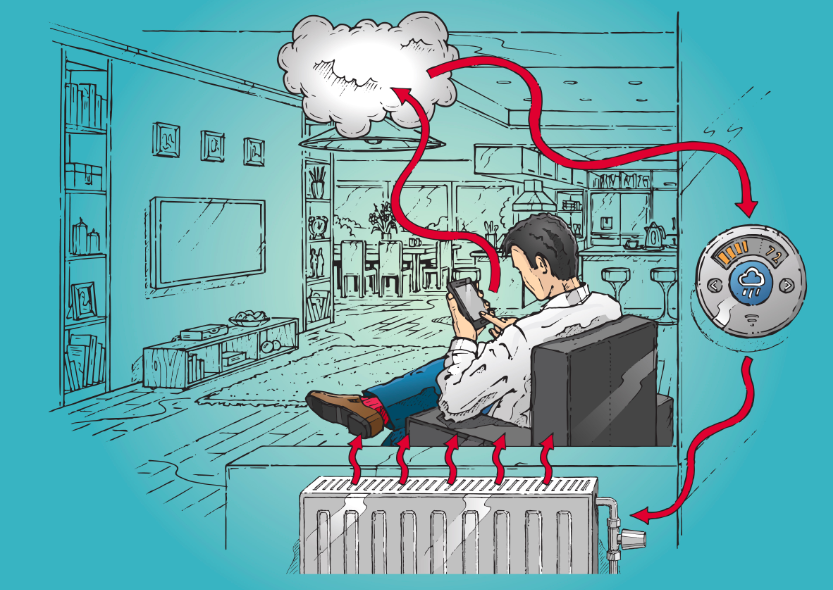In 2006, there were approximately two billion ‘smart’, internet-connected objects on the planet. This included everything from smartphones to manufacturing machinery. By 2020, there will be 200 billion.
This will be driven in part by the Internet of Things (IoT), which will offer connectivity of objects, from mobile devices to kitchen equipment, automobiles and machinery. It will allow everyday items to be connected and remotely controlled more easily and more intelligently.
As consumers rely more and more on smart technology in their daily lives, businesses face a huge challenge – and an equally huge opportunity.
There is the potential to ‘make smart’ almost every object in the world. This is no exaggeration. The first ‘smart plants’ were developed in 2008, connected to sensors and given their own Twitter accounts to tweet that they were thirsty and needed watering. Every single manufacturer or service provider in the world has the opportunity to improve and adapt their offering to meet the expectations of an IoT-dependent end user.
>See also: Making the Internet of Things a business reality
Imagine a fridge that alerts its owner that they need milk whenever they walk past a supermarket. Or in business, imagine a warehouse that orders more produce when its sensors are alerted to low stock. It is that kind of smart, efficient world that is just around the corner – we need to adapt quickly to make the most of it.
Importance of the infrastructure
When considering what this new smart world might look like, it is easy to be blown away by examples like the smart plant. But if we take a step back, we realise that end products are just one part of the IoT. What else is needed? Connection – fast, reliable and constant internet connection.
Developments in mobile internet – from 3G to 5G – will go some way to helping aid this near-future reality. But it has its limitations: some rural areas still suffer from poor coverage, and it’s impossible for mobile signals to penetrate some areas of older buildings.
With that in mind, it is generally accepted that Wi-Fi is the real enabler and therefore it should be viewed as a piece of strategic infrastructure enabling the next wave of products, services and insights for businesses.
In the industries that have most widely implemented Wi-Fi for their customers – namely retail and food and beverage – Wi-Fi is sometimes seen as simply ticking a box from a customer service perspective. It’s nice to have and helps keep everyone happy. A few businesses are already using it in a more sophisticated manner – exploring ways of collecting data to provide a more personalised service, for example. But Wi-Fi can and should be so much more than that.
Wi-Fi and the IoT
To deliver its proper value, Wi-Fi must be understood as the strategic infrastructure than enables companies to do new things and offer new services. Without this kind of reliable, fast connection, the Internet of Things cannot reach its potential.
Some brands are already seeing this value – for example, LegoLand’s popular Q-Bot device allows visitors to reserve their place in the queue without having to stand in line. That service would not be smooth without access to reliable, fast Wi-Fi.
Similarly, businesses like Superdrug have used free Wi-Fi service in-store to improve the way staff are able to work – in this case, providing iPads for product information, stock data and sales. And Virgin Active’s use of TechnoGym, which allows members to swipe, scroll, click and jump from one activity to another, is another example of Wi-Fi being required to really maximise technology’s business potential.
Industries such as retail, healthcare or banking could benefit significantly from this technology. In healthcare, for example, infant monitors in hospitals have been developed to send parents real-time information on their baby’s breathing, skin temperature, sleeping position, and activity level. For a new mother, this knowledge is hugely comforting as her child sleeps in the hospital’s nursery.
Similarly, in a supermarket, a shopper could walk round with a device monitoring what items they’re collecting and link it back to their fridge-freezer or cupboards, informing them if that product is not actually needed, or if more is required based on previous consumption.
This may all sound like a scene from a science-fiction film but it’s not far away and it all relies on the availability of Wi-Fi in those venues. The products themselves are being developed to provide IoT functionality. But whether the location is a hospital, retail outlet or bar, it needs to offer Wi-Fi to provide and efficiently enable these kinds of advanced services. It’s not an add-on, it’s an essential part of business development.
>See also: Modern challenges in store for the Internet of Things
In that context, Wi-Fi, and connectively as a whole, should be seen as the platform to enable new ideas – new business models, new products and services, new ways to better understand customers and new revenue streams. This will become increasingly relevant as technology improves and we move towards a world in which the Internet of Things becomes a reality.
To benefit from the potential of this technology, businesses need to change their connectivity mindset. If the world continues to see Wi-Fi as an ‘add-on’, we will find that the products are there but the connection to make them succeed is not. In an IoT-led world, that missed opportunity is simply not an option.
Sourced from Roger Matthews, The Cloud










